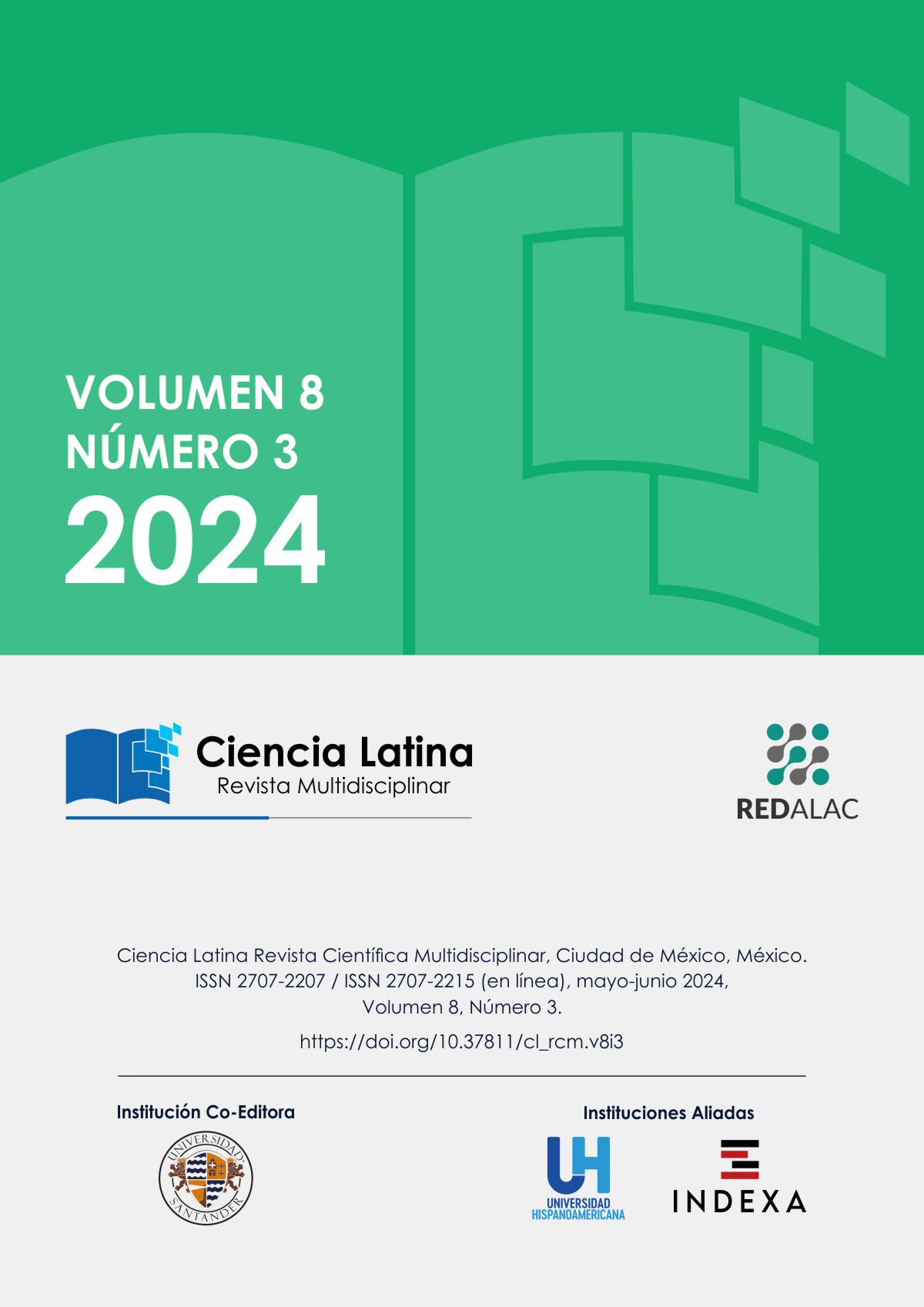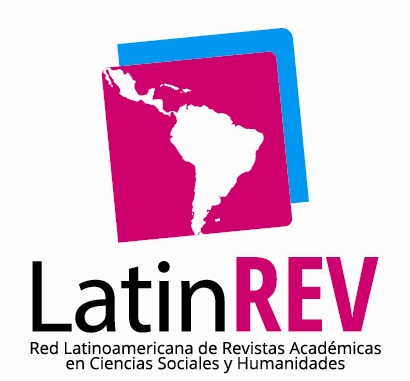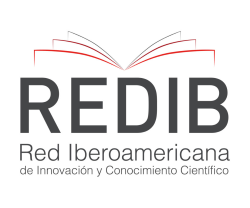Predicción de la Estructura Tridimensional de Enzimas con Actividad Degradadora de Poliuretano en el Año 2023
Resumen
El plástico ha provocado graves problemas ambientales y de salud pública a nivel global debido a su uso extensivo. Este estudio se centra en la degradación de poliuretanos, destacando la importancia de predecir la estructura de enzimas mediante AlphaFold y el docking molecular para comprender su interacción con estos polímeros. La población deestudio incluyó todas las secuencias de proteínas en PubMed, seleccionando una muestra representativa con actividad catalítica relacionada con poliuretanos mediante búsqueda exhaustiva. Las secuencias, identificadas por códigos GenBank, fueron recopiladas de PubMed y otras fuentes. Las propiedades fisicoquímicas de las enzimas se caracterizaron con Protparam, realizando alineamientos y cladogramas con Clustal Omega, identificando motivos con MEME, modelando estructuras con ColabFold y evaluándolas con SAVES. El docking molecular se llevó a cabo utilizando CB- Dock y AutoDock Vina. Se identificaron y caracterizaron 29 secuencias enzimáticas: 7 poliuretanasas, 15 cutinasas y 7 lipasas, con agrupaciones filogenéticas distintas y motifs significativos. El modelado en AlphaFold reveló diferencias estructurales evidenciadas en modelos tridimensionales y sus puntuaciones de calidad. El docking molecular con el poliuretanoproporcionó información sobre la potencial interacción de estas enzimas con el compuesto. Este análisis meticuloso brindó un panorama detallado de propiedades, estructuras y potenciales interacciones. Basándose en estructuras tridimensionales predichas por AlphaFold, este estudio sugiereque las proteínas modeladas tienen un potencial significativo para unir y potencialmente degradar poliuretanos, representando una valiosa contribución a la bioinformática y prometiendo nuevas líneas de investigación en el estudio de proteínas y su actividad catalítica con polímeros.
Descargas
Citas
Abrigach, F., Rokni, Y., Takfaoui, A., Khoutoul, M., Doucet, H., Asehraou, A., & Touzani, R. (2018). In vitro screening, homology modeling and molecular docking studies of some pyrazole and imidazole derivatives. Biomedicine & Pharmacotherapy, 103, 653–661.
Al Hosni, A. S., Pittman, J. K., & Robson,
G. D. (2019). Microbial degradation of four biodegradable polymers in soil and compost demonstrating polycaprolactone as an ideal compostable plastic. Waste Management,97,
–114. https://doi.org/10.1016/j.wasman.2019.07.042
Álvarez-Barragán, J., Domínguez- Malfavón, L., Vargas-Suárez, M., González-Hernández, R., Aguilar-Osorio, G., & Loza-Tavera, H. (2016). Biodegradative Activities of Selected Environmental Fungi on a Polyester Polyurethane Varnish and Polyether Polyurethane Foams. Applied and Environmental Microbiology, 82(17),5225–5235.https://doi.org/10.1128/AEM.01344-16
Amobonye, A., Bhagwat, P., Singh, S., & Pillai, S. (2021). Plastic biodegradation: Frontline microbes and their enzymes. Science of The Total Environment, 759, 143536.https://doi.org/10.1016/j.scitotenv.2020.1 43536
Angkawidjaja, C., Matsumura, H., Koga, Y., Takano, K., & Kanaya, S. (2010). X-ray Crystallographic and MD Simulation Studies on the Mechanism of Interfacial Activation of a Family I.3 Lipase with Two Lids. Journal of Molecular Biology, 400(1),82–95.
https://doi.org/https://doi.org/10.1016/j.jm b.2010.04.051
Awasthi, S., Srivastava, P., Singh, P., Tiwary, D., & Mishra, P. K. (2017). Biodegradation of thermally treated high- density polyethylene (HDPE) by Klebsiella pneumoniae CH001. 3 Biotech, 7(5), 332. https://doi.org/10.1007/s13205-017-0959-3
Barnetche, J. M. (2007). La bioinformática como herramienta para la investigación en salud humana. Salud Pública de México, 49, 64–66.
Burelo, M., Gaytán, I., Loza-Tavera, H., Cruz-Morales, J. A., Zárate-Saldaña, D., Cruz-Gómez, M. J., & Gutiérrez, S. (2022). Synthesis, characterization and biodegradation studies of polyurethanes: Effect of unsaturation on biodegradability. Chemosphere,307,136136.
https://doi.org/10.1016/j.chemosphere.20 22.136136
Carr, C. M., Clarke, D. J., & Dobson, A. D.
W. (2020). Microbial Polyethylene Terephthalate Hydrolases: Current and Future Perspectives. Frontiers in Microbiology,https://doi.org/10.3389/fmicb.2020.57126 5
Cherng, J. Y., Hou, T. Y., Shih, M. F., Talsma, H., & Hennink, W. E. (2013).Polyurethane-based drug delivery systems. International Journal of Pharmaceutics, 450(1–2), 145–162. https://doi.org/10.1016/j.ijpharm.2013.04. 063
Colovos, C., & Yeates, T. O. (1993). Verification of protein structures: Patterns of nonbonded atomic interactions. Protein Science, 2(9), 1511–1519.
https://doi.org/10.1002/pro.5560020916
Danso, D., Chow, J., & Streit, W. R. (2019). Plastics: Environmental and Biotechnological Perspectives on Microbial Degradation. Applied and Environmental Microbiology, 85(19). https://doi.org/10.1128/AEM.01095-19
Da Silva Santos , F., & López Vargas , R. (2020). Efecto del Estrés en la Función Inmune en Pacientes con Enfermedades Autoinmunes: una Revisión de Estudios Latinoamericanos. Revista Científica De Salud Y Desarrollo Humano, 1(1), 46–59. https://doi.org/10.61368/r.s.d.h.v1i1.9
Emadian, S. M., Onay, T. T., & Demirel, B. (2017). Biodegradation of bioplastics in natural environments. Waste Management, 59, 526–536.
https://doi.org/10.1016/j.wasman.2016.10.006
Eriksen, M. K., Pivnenko, K., Olsson, M. E., & Astrup, T. F. (2018). Contamination in plastic recycling: Influence of metals on the quality of reprocessed plastic. Waste Management (New York, N.Y.), 79, 595–606.
https://doi.org/10.1016/j.wasman.2018.08.007
Flores-Castañón, N., Sarkar, S., & Banerjee, A. (2022). Structural, functional, and molecular docking analyses of microbial cutinase enzymes against polyurethane monomers. Journal of Hazardous Materials Letters, 3, 100063.
https://doi.org/https://doi.org/10.1016/j.ha zl.2022.100063
Gautam, R., Bassi, A. S., & Yanful, E. K. (2007). Candida rugosa lipase-catalyzed polyurethane degradation in aqueous medium. Biotechnology Letters, 29(7), 1081–1086.
https://doi.org/10.1007/s10529-007-9354- 1
Hatti-Kaul, R., Nilsson, L. J., Zhang, B., Rehnberg, N., & Lundmark, S. (2020). Designing Biobased Recyclable Polymers for Plastics. Trends in Biotechnology, 38(1), 50–67.
https://doi.org/10.1016/j.tibtech.2019.04.0 11
Jumper, J., Evans, R., Pritzel, A., Green, T., Figurnov, M., Ronneberger, O., Tunyasuvunakool, K., Bates, R., Žídek, A., Potapenko, A., Bridgland, A., Meyer, C., Kohl, S. A. A., Ballard, A. J., Cowie, A., Romera-Paredes, B., Nikolov, S., Jain, R., Adler, J., … Hassabis, D. (2021). Highly accurate protein structure prediction with AlphaFold. Nature, 596(7873),583–589.
https://doi.org/10.1038/s41586-021- 03819-2
Laskowski, R. A., MacArthur, M. W., Moss, D. S., & Thornton, J. M. (1993). PROCHECK: a program to check the stereochemical quality of protein structures.Journal
Of Applied Crystallography, 26(2), 283–291. https://doi.org/10.1107/S0021889892009 944
Liu, J., He, J., Xue, R., Xu, B., Qian, X.,
Xin, F., Blank, L. M., Zhou, J., Wei, R., Dong, W., & Jiang, M. (2021). Biodegradation and up-cycling of polyurethanes: Progress, challenges, and prospects. Biotechnology Advances, 48, 107730.
https://doi.org/10.1016/j.biotechadv.2021. 107730
Liu, Y., Grimm, M., Dai, W., Hou, M.,Xiao, Z.-X., & Cao, Y. (2020). CB-Dock:a web server for cavity detection-guided protein–ligand blind docking. Acta Pharmacologica Sinica, 41(1), 138–144. https://doi.org/10.1038/s41401-019-0228- 6
Liu, Y., Yang, X., Gan, J., Chen, S., Xiao,Z.-X., & Cao, Y. (2022). CB-Dock2:
improved protein–ligand blind docking by integrating cavity detection, docking and homologous template fitting. Nucleic Acids Research, 50(W1), W159–W164.
https://doi.org/10.1093/nar/gkac394
Loredo-Treviño, A., Argüello, A., Rodriguez, R., Gutierrez-Sanchez, G., Escamilla, A., & Aguilar, C. (2017). Fungal biodegradation of rigid polyurethane.Química Nova. https://doi.org/10.21577/0100- 4042.20170094
Magnin, A., Pollet, E., Phalip, V., & Avérous, L. (2020). Evaluation of biological degradation of polyurethanes.Biotechnology Advances, 39, 107457.
https://doi.org/10.1016/j.biotechadv.2019. 107457
Nakajima-Kambe, T., Shigeno-Akutsu, Y., Nomura, N., Onuma, F., & Nakahara, T. (1999). Microbial degradation of polyurethane, polyester polyurethanes and polyether polyurethanes. Applied Microbiology and Biotechnology, 51(2), 134–140. https://doi.org/10.1007/s002530051373
Nanguce López , M., & Sierra Ramírez, J. A. (2024). Funcionalidad familiar y depresión en adultos mayores con diabetes. Revista Científica De Salud Y Desarrollo Humano, 5(1), 378–391. https://doi.org/10.61368/r.s.d.h.v5i1.101
Parashar, N., & Hait, S. (2021). Plastics in the time of COVID-19 pandemic: Protector or polluter? Science of The Total Environment, 759, 144274. https://doi.org/10.1016/j.scitotenv.2020.1 44274
Patel, D., Mamtora, D., Kamath, A., & Shukla, A. (2022). Rogue one: A plastic story. Marine Pollution Bulletin, 177, 113509. https://doi.org/10.1016/j.marpolbul.2022. 113509
Pereiras Varela, M. (2019). Contaminación marina por plásticos.
Pérez-García, P., Danso, D., Zhang, H., Chow, J., & Streit, W. R. (2021). Exploring the global metagenome for plastic- degrading enzymes (pp. 137–157).
https://doi.org/10.1016/bs.mie.2020.12.02 2
Petock, J. M., Wang, Y.-F., DuBois, G. C.,
Harrison, R. W., & Weber, I. T. (2001). Effects of different post-crystallization soaking conditions on the diffraction of Mtcp1 crystals. Acta Crystallographica Section D: Biological Crystallography, 57(5), 763–765 Plastics Europe. (n.d.). Plásticos- Situación en 2020.
https://plasticseurope.org/es/acerca-de/
Plastics Europe. (2021). PLASTICS - THE FACTS 2020.
Prajapati, K., Nayak, R., Shukla, A., Parmar, P., Goswami, D., & Saraf, M. (2021). Polyhydroxyalkanoates: An Exotic Gleam in the Gloomy Tale of Plastics. Journal of Polymers and the Environment, 29(7), 2013–2032.
https://doi.org/10.1007/s10924-020- 02025-x
Qiu, Y., & Wei, G.-W. (2023). Artificial intelligence-aided protein engineering: from topological data analysis to deep protein language models. Briefings in Bioinformatics, 24(5), bbad289.
Raval, K., & Ganatra, T. (2022). Basics, types and applications of molecular docking: A review. IP International Journal of Comprehensive and Advanced Pharmacology, 7(1), 12–16. https://doi.org/10.18231/j.ijcaap.2022.003
Recycling and Energy | World Plastics Council. (n.d.).
https://www.worldplasticscouncil.org/posi tions-actions/recycling-and-energy/
Robert, X., & Gouet, P. (2014). Deciphering key features in protein structures with the new ENDscript server. Nucleic Acids Research, 42(Web Server issue), W320-4.
https://doi.org/10.1093/nar/gku316
Rosenfeld, R., Vajda, S., & DeLisi, C. (1995). Flexible Docking and Design.Annual Review of Biophysics and Biomolecular Structure, 24(1), 677–700.
https://doi.org/10.1146/annurev.bb.24.060 195.003333
Ruiz Díaz Benítez, J. R. (2023). Diseño de una Arquitectura de Referencia en la Logística de Abastecimiento Inteligente de Almacenes mediante el uso de Tecnologías de la Industria 4.0. Caso Almacenes retail de la Ciudad de Pilar. Revista Veritas De Difusão Científica, 4(2), 55–70. https://doi.org/10.61616/rvdc.v4i2.46
Salgado, C. A., Silva, J. G., Almeida, F. A.de, & Vanetti, M. C. D. (2023). Biodegradation of polyurethanes by Serratia liquefaciens L135 and its polyurethanase: In silico and in vitro analyses. Environmental Pollution, 333, 122016.
https://doi.org/https://doi.org/10.1016/j.en vpol.2023.122016
Scardino, V., Di Filippo, J. I., & Cavasotto,C. N. (2023). How good are AlphaFold models for docking-based virtual screening? Iscience, 26(1).
Selvam, K., Senbagam, D., Selvankumar, T., Sudhakar, C., Kamala-Kannan, S., Senthilkumar, B., & Govarthanan, M. (2017). Cellulase enzyme: homology modeling, binding site identification and molecular docking. Journal of Molecular Structure, 1150, 61–67.
Santiago Flores, C. A., Solís Peralta, F. M., & Huerta Patraca, G. A. (2024). El Autorretrato como Estrategia Socioemocional para Fortalecer el Autoconcepto en Alumnos de Bachillerato. Estudios Y Perspectivas Revista Científica Y Académica , 4(2), 136–154. https://doi.org/10.61384/r.c.a.v4i2.204
Tovar Cuevas, J. R., Portilla-Yela, J., Burbano Pantoja, V. M., & Valdivieso Miranda, M. A. (2024). Factores asociados al desempeño en el primer curso de matemáticas para estudiantes universitarios. Emergentes - Revista Científica, 4(1), 316–349. https://doi.org/10.60112/erc.v4i1.110
Ullah, R., Tsui, M. T.-K., Chow, A., Chen, H., Williams, C., & Ligaba-Osena, A. (2023). Micro(nano)plastic pollution in terrestrial ecosystem: emphasis on impacts of polystyrene on soil biota, plants,animals, and humans. Environmental Monitoring and Assessment, 195(1), 252.
Derechos de autor 2024 Elizabeth Troya Castillo , Alejandra Estela Miranda , Erick Giancarlo Suclupe Farro

Esta obra está bajo licencia internacional Creative Commons Reconocimiento 4.0.











.png)




















.png)
1.png)


